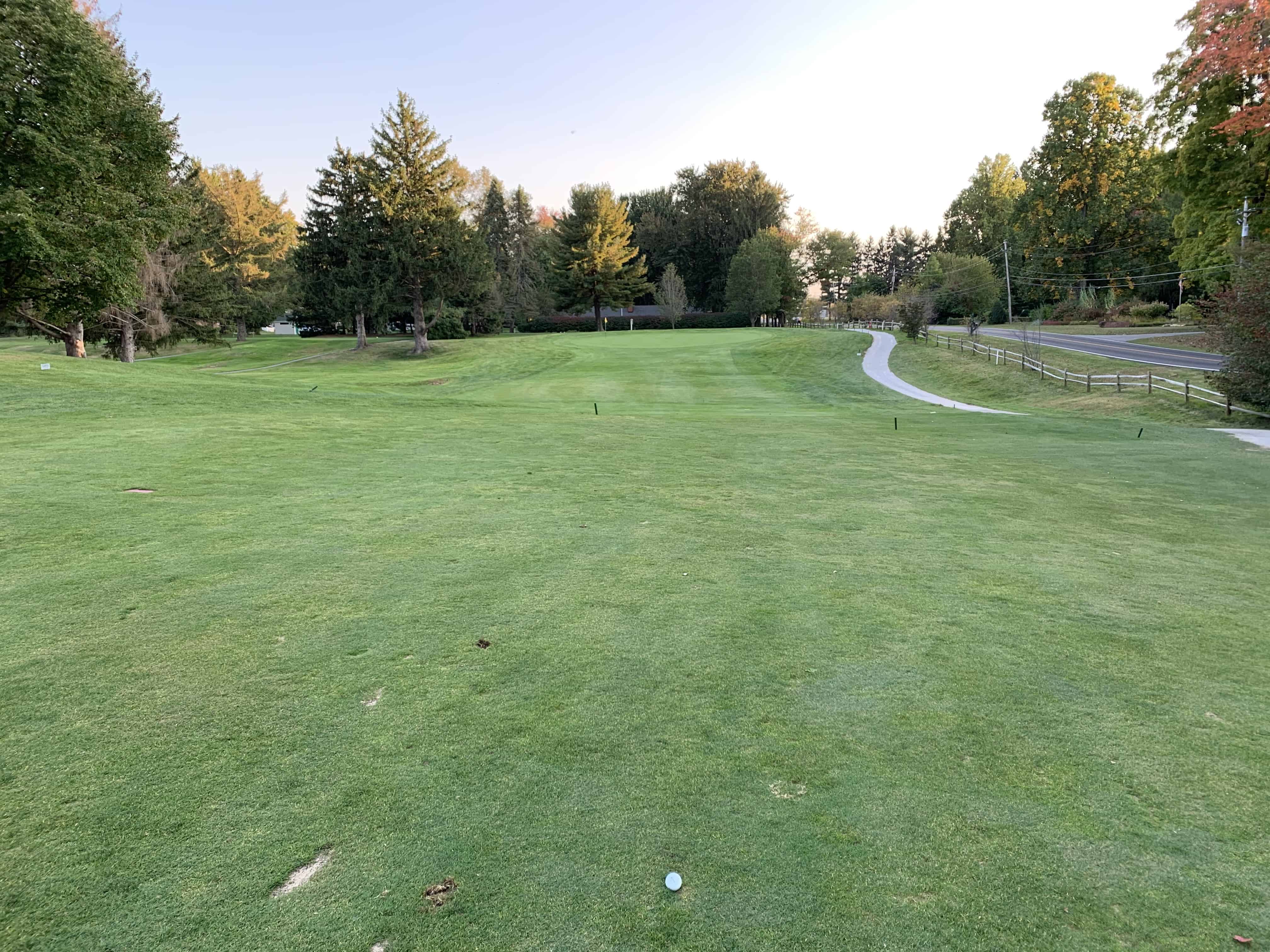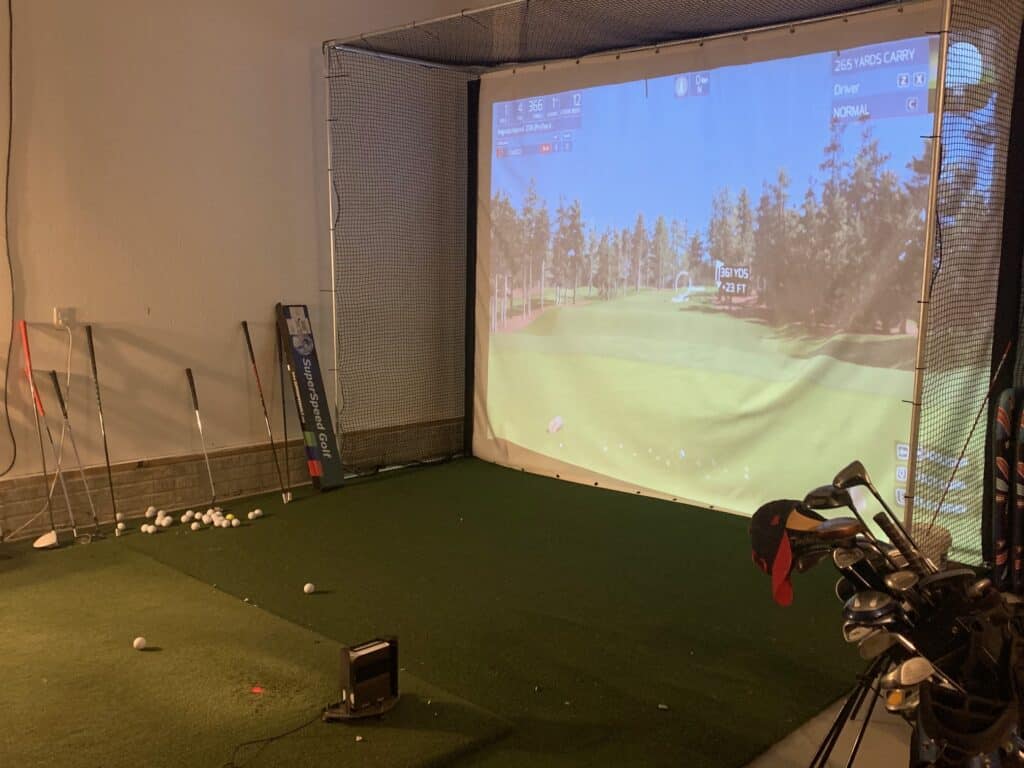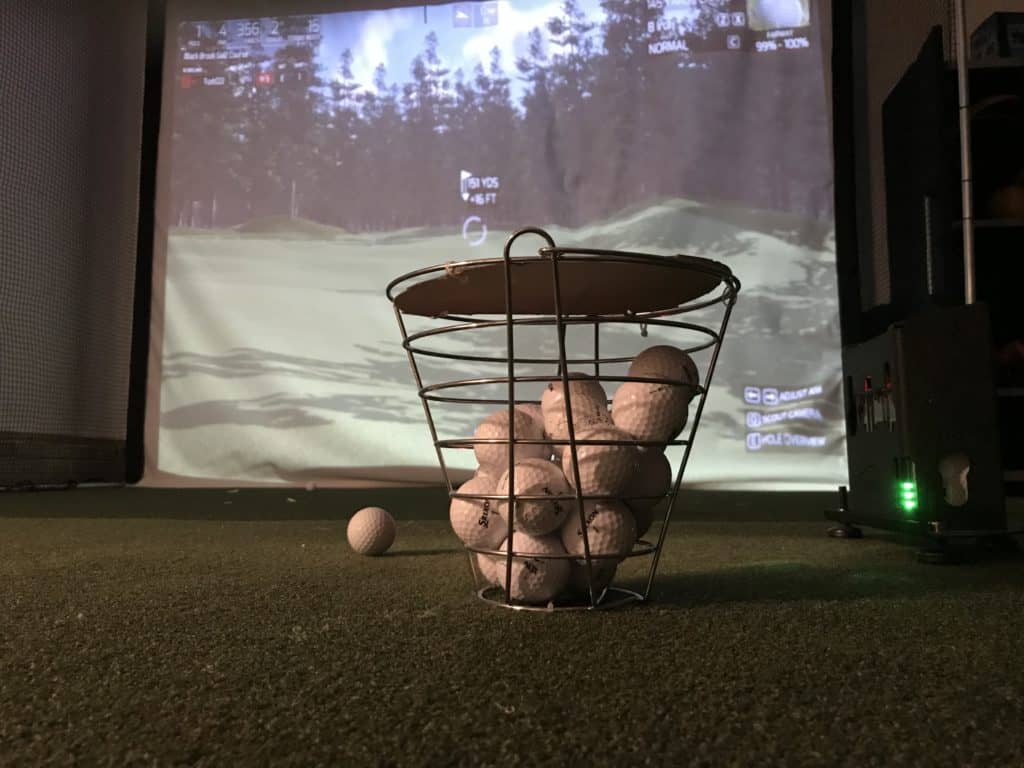The driver should be used on all par 4s and par 5s where there isn’t a significant hazard. The golfer must learn to hit the driver and become comfortable with the demands that a golf course will require.
The driver is the longest club in the bag at around 46 inches with the least amount of loft, typically in the 8-11 degree range.
The outcome of a 46 inch driver with low loft results in the golf club that provides the most club head speed and ball speed on average.
To truly reach one’s full potential in the game of golf, the driver needs to become a club that you feel comfortable with and that allows you to attack a golf course.
Distance is one of the most dominating factors in the game today. The higher your club head speed, the lower your handicap will be on average.
It is difficult to reach single digit handicap status if your swing speed is below 90 miles per hour. The speed just isn’t there and leaves too many long approach shots into par 4s and doesn’t allow you to be aggressive on par 5s.
We have all heard the saying, “drive for show, putt for dough.” However, if you are always putting from 30 feet plus, you will have a very low chance of making enough birdie putts to get your game to certain levels.
When To Use A Driver in Golf?
Recommendation: I would highly recommend learning to hit the “bunt” or “second serve” with the driver. The 2022 US Open winner, Matt Fitzpatrick, used 5 different driver swings. If the average amateur can just learn two driver swings (a stock driver and a “bunt” driver) they will have a leg up on their competition!
Bottom line…use your driver often and hit it far enough to attack a course and set up scoring opportunities.

Why Should A Golfer Hit A Driver So Frequently?
The analytics are clear!
Recently, there have been plenty of studies performed to analyze the shots gained and how to attack a golf course. Mark Brodie has brought analytics to the forefront of the game and has helped many golfers understand the importance of the driver and why it should be used as frequently as it should.
Scott Fawcett’s DECADE system helps a golfer understand when to hit shots and where based on the course architecture and utilizing tools like Google Earth to prepare for a round of golf prior to ever stepping onto the golf course.
He uses the 70 yard rule that if there is a 70 yard gap between the two extremes of a hazard, then the golfer should hit the driver. He dives into further details on when to attack pins and when to play it more safely based on the yardage, pin location, wind and other variables that impact the analytics in golf.
Resource: What loft should my driver be?
What does all this mean for the everyday amateur golfer?
Become great with your driver!
The everyday amateur golfer should work to reach a high level of proficiency with the driver. The frequency at which a golfer will be hitting a driver is close to 12-14 times per round and the golfer must hit the ball far enough and accurately enough to set up approach shots into the greens.
The shorter the approach shot, the closer the golfer will be on average in proximity to the pin. The closer to the hole after the approach shot, the higher the probability of making the putt. The more putts made, the lower the score, but it all starts with hitting the driver far enough.
Resource: Why can’t I hit my driver straight?
How To Increase Driver Swing Speed?
Train for speed!
While other factors such as spin rate, smash factor and angle of attack impact overall distance, there is no substitute for pure swing speed.
Ultimately, the number one factor that influences total distance in golf swing is the clubhead speed that one is able to produce. For example, with the driver the golfer that swings 110 miles per hour is going to hit the ball further than the golfer who only swings 95 miles per hour. The same holds true for the irons. For example, the golfer that swings their 6 iron at 85 miles per hour is going to hit the ball further than the person at 70 miles per hour with the 6 iron.
Resource: How to hit a draw with my driver?
Best System To Increase Swing Speed
The best system I can recommend and one that has worked for me and many touring pros is the SuperSpeed Golf System.
Check current price of SuperSpeed Golf, here!
This overspeed based system utilizes three different weighted speed training clubs. Two of the clubs are lighter than your average driver and one is heavier. Over the course of time, the golfer trains every other day for about 15 minutes per session, potentially resulting in a 5-8% increase in clubhead speed.
The golfer can expect to see a difference as early as the first training session and after about a month of training, the speed can become more permanent.
Of course, if the golfer continues to train, he or she can expect to continue to increase their swing speed at a slightly slower rate, but over time increase by 1-2 miles per hour every couple of months. Over the course of a year, the golfer can see some rather impressive results with every club in the bag. You can stand over that 9 iron from 135 yards or possibly more and have confidence that you have the swing speed to make this happen!

How To Increase Accuracy With the Driver?
Develop a stock shot!
We all dream about stepping up to a tee shot and hitting that perfect ball flight with a slight draw of fade and being in great positions on every hole. While it may not always happen, we can train to develop this stock shot with the drill detailed below.
The stock shot is the go to shot that every golfer should have. For some this is a draw, while others might prefer the fade. Go with your stock shot and play it on just about every hole. While opinions vary on working the ball both ways, the DECADE approach is to stick to your stock shot because of the double cross in the golf and the percentage of times that golfers hit, resulting in the golfer being in a really bad place on the course.
Resource: Are adjustable drivers worth it?
Here is a drill to develop a stock shot:
- Set up an alignment stick 6-8 yards in front of the line right down your target line.
- Take another alignment stick and set it up 2-3 yards left (for a fade) or right (for a draw).
- Now hit shots between the gap and try to get the ball to curve back towards the target.
- Go ahead and build your consistency by hitting it through this gate at least 7 out of every 10 swings.
- An 8 or 9 iron would be the right club to complete this drill with at first.
- You can advance to the driver over time.
I prefer to setup this drill using my SkyTrak launch monitor to see my shot shape and get some key data to help develop this stock shot at the ultimate level. I am asking a certain club path and spin axis that results in a slight draw that starts right and curves back towards the target.
How To Measure Your Progress
The golfer should be working to increase accuracy and speed, but how does one measure their progress?
I would highly recommend checking out the possibilities of getting your very own personal portable launch monitor. The ability to monitor the following is a game changer:
- Ball Speed
- Carry Distance and Total Distance
- Launch Angle
- Spin Rate
- Side Axis
If you are serious about taking your game to the next level, gaining additional distance with your driver and irons, you need the instant feedback on every practice swing that you take. Whether you set it up in your garage with a net and mat, build a complete golf simulator or simply take with you to the driving range you will have the feedback needed to improve your game.
Resource: How to hit my driver higher?
You can build your own laboratory where you can experiment and train for additional speed, while having real time data at your fingertips. I personally went with the SkyTrak and 800 rounds later on my golfer simulator. I have improved my scores by 4-6 shots and now shoot around par the majority of the time. The difference has been worth the investment!
While not everyone can afford the Trackman used on the PGA Tour by many players, there are some quality budget level launch monitors that range between 500 and 2000 dollars. More golfers are making the investment to improve their game and are relying on the technology tools of today’s game for the feedback needed to make a difference and finally get better!
Here are the top 3 options to check out:

Take Action – What You Can Do Today to Get Better
What does this mean for you? I believe in the following recipe to get better:
1 – Improve your motion in the golf swing by identifying a golf instructor. Here are some options:
Here is a list of golf instructors that we have reviewed:
2 – Train to swing faster and improve your swing speed. Here are some options:
Looking to gain more Speed and Distance in your swing. Two Options:
3 – Understand course strategy and work to break through your next barrier. Here is a series on breaking through:
We have provided guides on how to break 100, 90, 80 and 70. Check out more below, if interested.
4 – Practice Frequently
Did you know that I build a golf simulator in my garage and have played over 500 rounds of golf on my SkyTrak system? It has been a game changer and one worth checking out. Here are some of my other posts on golf simulators frequently asked questions:
- Is a Golf Simulator Worth It?
- How to Build a Golf Simulator?
- What is the Best Golf Simulator?
- Golf Simulator Accessories?
- How to Build a Golf Simulator for under $7000
- Top 11 Reasons to Buy a SkyTrak
- How to Build a Golf Simulator for Under $1000
- Why Build A Golf Simulator?
- What Space is Needed?
- Can A Golf Simulator Improve My Game?
- How Much Does A Golf Simulator Cost?
- Don’t Forget to Check out our 15 best golf swings of all time.
I am an amateur golfer on a journey to get better, enjoy the game as often as possible and share my passion and knowledge with others. I have coached high school golfers at a high level and have a great passion for the game and want to give back. I enjoy learning about the golf swing and am currently studying to be a certified professional golf instructor. Join me in our journey to get better everyday.

